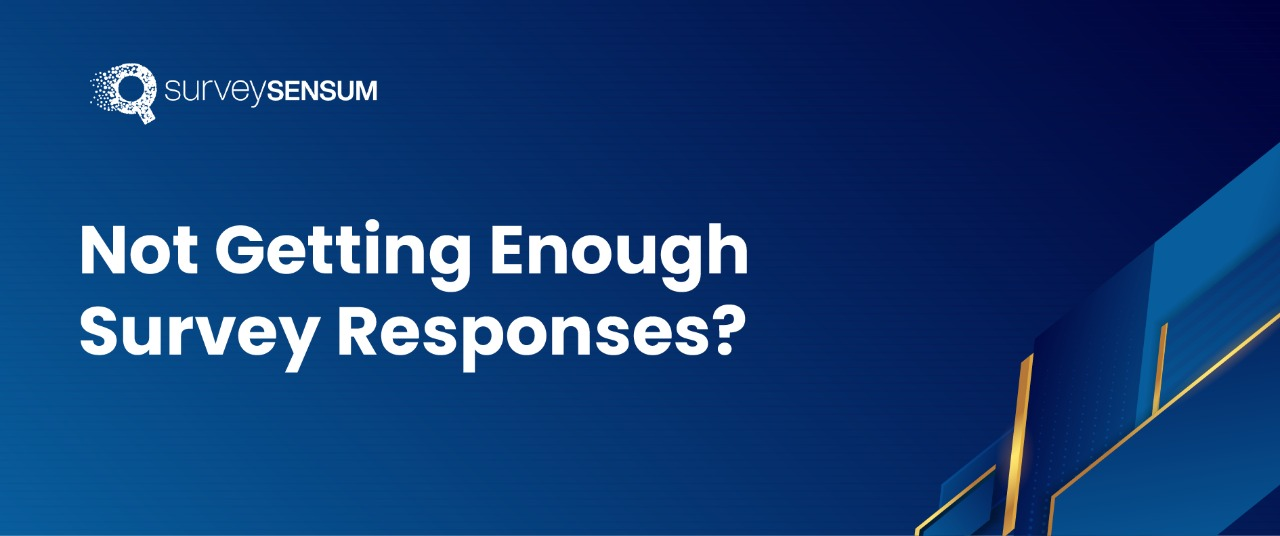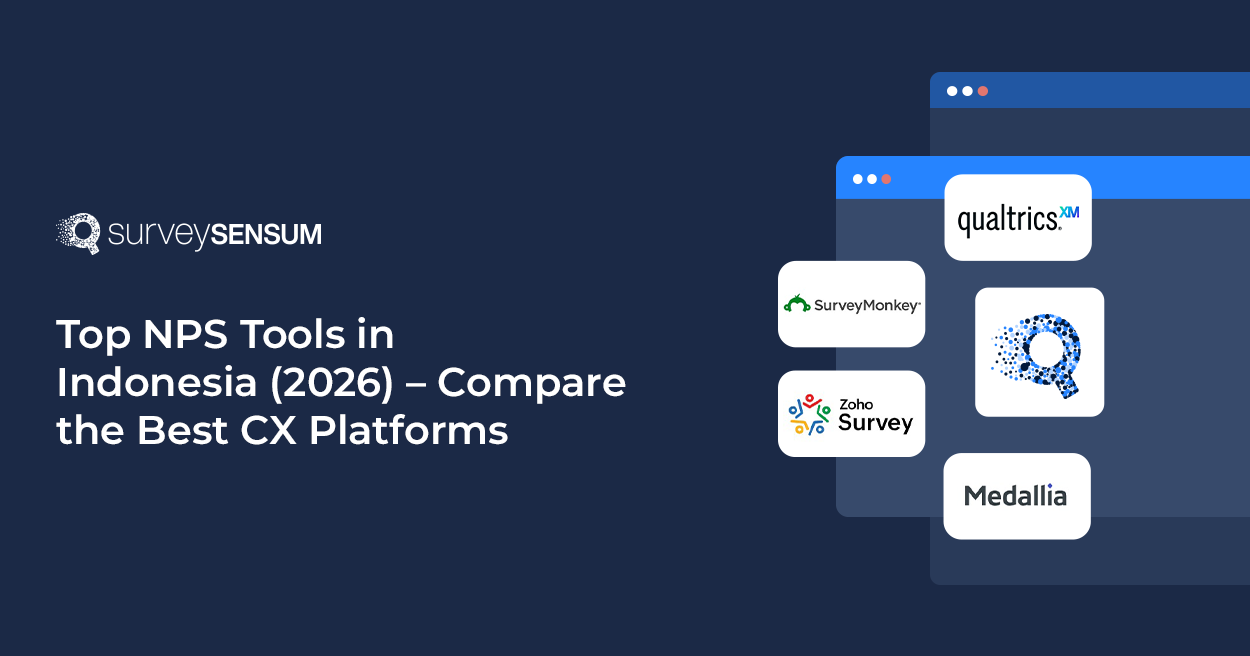

Did you know that companies with the highest NPS in their industries grow revenue 2.5 times faster than their competitors?
This goes on to prove that improving NPS is not only beneficial for your reputation and building longer customer relationships but also for your financial success. This is because instead of investing money and effort into attracting new customers, you prioritize building relationships with customers who are already loyal to you and are more likely to send more.
However, improving NPS and seeing this kind of success doesn’t happen overnight – it requires setting up clear and actionable goals that will impact your bottom line.
But do you really need to go through the effort of NPS goal setting and do they really matter in the long run? Scroll down and let’s find out.
What Are NPS Goals?

Think about it, before going on a trip, don’t you plan out the entire thing – from places to visit, where to stay, flight timings, and many other things? This makes your trip more enjoyable and hassle-free so that you don’t run around chicken without head finding a decent hotel in the middle of a long weekend.
The same goes for your NPS program. Without having an idea about your NPS state, areas of improvement, and your position in this competitive market, you cannot create a successful NPS program.
This is where NPS goals come into play. These targeted objectives are aimed at improving your NPS score, one of the important CX metrics for measuring customer loyalty and satisfaction. These goals can vary depending on your current NPS score.
For example, if you are losing customers then your NPS goal will be to stop your detractors from churning and converting your passives into promoters.
So, let’s understand why setting these goals is important and how to set them correctly.
Why Set NPS Goals For Your NPS Program?
Before jumping into the “how”, let’s first understand the “why” behind it.
1. Provides Focus and Direction: Setting up goals before forming an action plan provides you with clarity on what you need to achieve in terms of improving your NPS. Without this, it is easy to get lost in the amount of data and take the wrong step.
2. Enables Measurable Progress: When you know what to measure and track, you can quantify your success. By setting up measurable NPS goals, you can track and monitor important metrics, and identify common trends, common pain points, your initiatives and their impact on customer loyalty and satisfaction, etc.
3. Facilitates Strategic Decision-Making: When you set up realistic goals for your NPS program, you get an idea of how to take prioritized action that has the greatest impact on customer experience and allocate resources accordingly.
4. Creates Accountability: Setting up goals for your NPS program creates a sense of accountability across teams. When every team member understands the current NPS state and targets that need to be achieved to improve the overall NPS performance, ensuring consistent efforts across departments.
Define and track your NPS goals over time with SurveySensum to visualize your progress and pinpoint areas for improvement effortlessly.
By setting up NPS goals, you create a roadmap that transforms customer feedback into actionable outcomes, driving long-term and continuous success.
How To Set Up Realistic NPS Goals?

Naturally, your NPS goal should be to increase your NPS score with every NPS survey you launch. However, there is more to that. You can set up different goals for achieving different objectives. For example,
- You can set up goals to convert passives into promoters or stop detractors from churning and convert them into promoters.
- You can also set up goals to leverage your promoters to spread organic word-of-mouth about your brand.
But of course, these goals need to be set up clearly and also need to be realistic and achievable, impacting and improving your overall NPS performance. So, let’s see how you can do that.
1. Analyze Current NPS Data
You need to have an idea about your current NPS performance and your standing in the market to possibly know where the issues are, which areas to improve, and how to improve them.
So, analyze your current data and naturally the starting point is launching NPS surveys at different touchpoints.
For example, you can launch surveys focusing on specific areas of your business like delivery experience or customer service process, etc. Then gather data from multiple channels and match the data with different NPS segments to evaluate which areas to improve for each segment.
After this NPS analysis, you can now take prioritized action that will have a positive impact on your overall NPS score.
2. Break Down Goals By Segments
Instead of setting a broad NPS goal that can be overwhelming and hard to achieve, break down your goals by customer segments (promoters, passives, and detractors), departments, regions, or specific customer journeys.
For example, your action for improving the experience for your detractors needs to be different from your action for passives, so set separate plans for each segment for a positive impact and better monitoring.
3. Identify Key Drivers
Not every aspect of your business has an equal impact on your NPS score. This is why it is important to identify the key NPS drivers that have the most impact and focus on them instead of having a broad action plan. Your key drivers can be anything from long wait times for customer support to poor delivery experience and by taking prioritized action on these specific areas that cause the most friction in your customer’s journey, you can get higher returns on your efforts.
Identify key drivers that significantly influence your NPS score and take prioritized action for strategic improvement in customer loyalty and satisfaction.
4. NPS Benchmark
Improving your NPS internally is not enough to achieve success because NPS varies widely across industries.
For example, if you are in the banking sector and have an NPS score of 60, that doesn’t necessarily mean that you have a good NPS score because when compared with the industry’s average NPS score, it comes to 73 for the banking industry.
This is where NPS benchmarking comes in. With NPS benchmarking you can conceptualize your NPS goals relative to your competitors and get a reference point so you know when you are underperforming or overachieving in comparison to your competitors.
5. Set Incremental Milestones
Instead of setting one, long-term goal, break down your NPS goals into smaller and more achievable milestones.
For example, if you are lagging behind by 20 points from your industry average and want to bridge that gap, then instead of creating a plan to achieve it in one go, set up smaller quarterly targets of 5 points each.
This will provide you with clearer and short-term milestones, allowing you and your teams to monitor metrics effectively and adjust strategies based on the ongoing performance.
6. Incorporate Customer Feedback
Your customers often tell you what they think of your brand, product, and services, you just need to do it more carefully. Customer feedback is an important part of any CX strategy as it provides valuable and actionable insights into your customer’s expectations, needs, and pain points.
So, use these insights to formulate action plans that will actually yield better results.
For example, if your customers are mentioning “product quality” issues repeatedly then a more realistic NPS goal will be to improve product quality by 30% within the next 8 months, making your NPS goals more grounded in real customer needs and pain points.
By following these best practices you can create NPS goals that focus on key drivers, improve NPS by each segment, and be grounded in customer’s actual pain points.
Conclusion
By setting up realistic and measurable NPS goals you create a clear and defined path for yourself and your team to improve your NPS performance. This path is marked by properly analyzing NPS data, breaking down goals by segments, and identifying key drivers, NPS benchmarks, short-term milestones, and customer feedback. Along with regular assessment and continuous monitoring to remain relevant, and realistic, to achieve continuous success.
However, you need a robust AI-powered NPS software, like SurveySensum, by your side. This NPS software provides an end-to-end NPS service – from helping you gather customer feedback to identifying key drivers impacting your NPS to setting up detailed dashboards for continuous monitoring and understanding the overall performance. Moreover, the tool also comes with CX consultation from top consultants who will help you take prioritized action that will impact your bottom line and drive business growth.

















